Jump to section:
Notifications
Some of you may know that Apple are about to release the next version of their iOS operating system for iPhones. This includes some rather exciting changes for notifications, exciting for you because you can control your notifications in lots of new ways and exciting for us because it makes our daily task of getting a notification to you at 3:30 everyday just that little bit more tricky!
We’ve been busy bees and have recently updated the app so it works really well with the next iOS version – so make sure you upgrade if you’ve not done so already (via the App store or Google Play) and if you’re not getting notifications at the moment have a read of our updated Notification Troubleshooting guide.
1. Teach Like A Work Horse
For the most part, teachers are contracted to complete ‘directed work’ for 1,285 hours over a year, equating to around 32 hours per week. However, the way teaching works, means there is typically much more to do than the activities that fill these hours – and so many of you end up working much longer.
How long is too long, though? Half of you said said that it was reasonable for a teacher to work between 40 and 50 hours per week during term time. And 9% said that working more than 50 hours each week was still reasonable.
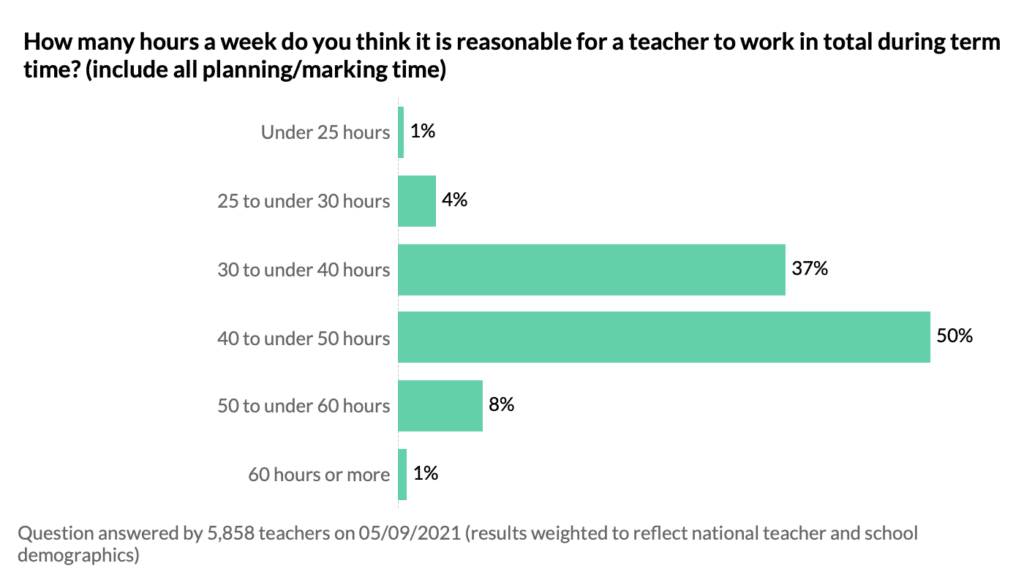
For those who think headteachers put unreasonable demands onto classroom teachers, you might be interested to note that fewer heads said working 50-plus hours was reasonable than any other group! (This is despite the fact that we know heads regularly report working more than 50 hours each week).
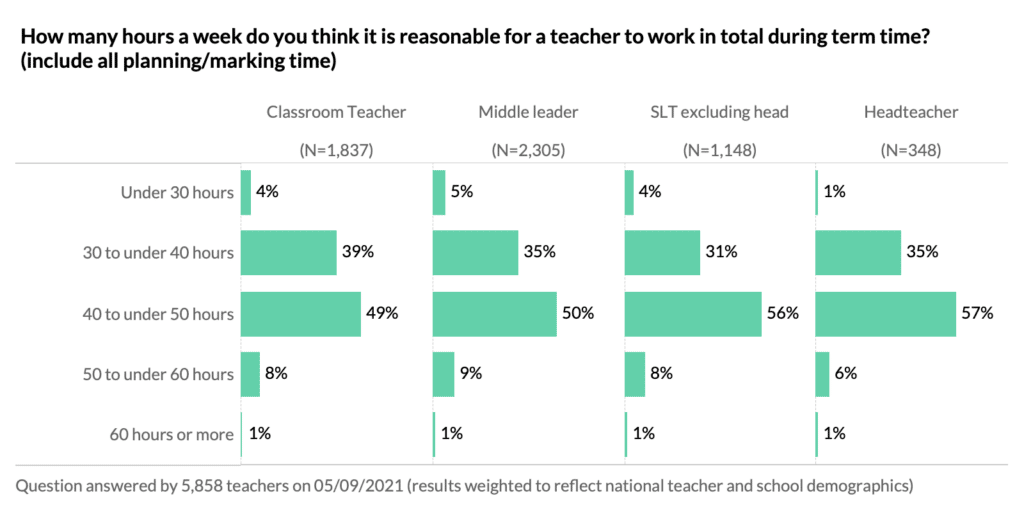
In the past, Teacher Tapp has found that most teachers estimate they work just over 50 hours per week. This is in the range that will be considered ‘unreasonable’ for most people. So it’s not surprising that many teachers feel their work pressures are too much. However, the fact that most people feel 40 – 50 is reasonable suggests that not many hours would need to be knocked off for things to feel more manageable. What could be done in your school to save three hours per week? It’s a question worth pondering…
2. #GiveYellowTheElbow
Right, on to today’s hot topic – stationery!
A new school year often means the joy of a huge new box of marker pens. But not for everyone! 8% of teachers aren’t given any free marker pens by their school 😵. At the other end of the scale, over 50% of teachers have the luxury of unlimited board markers! Perfect (as long as they’re not yellow!)
Arts teachers are the most likely to buy whiteboard markers out of their own pocket. Similarly, fewer primary school teachers have access to unlimited markers (only 1-in-3), although they still do get a limited number of free markers, which is not the case for those art teachers.
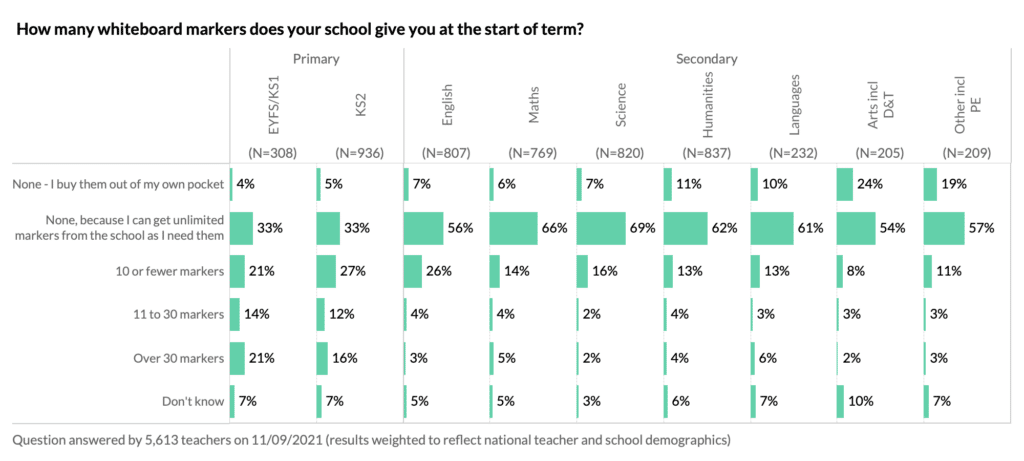
What constitutes a good marker pen though? Not if its colour is yellow, apparently! As one teacher said, when it comes to yellow on a whiteboard, they might as well rename it invisible ink!
84% of teachers wanted to remove the yellow marker from the multi-pack, with brown in a far-distant second place. Headteachers were marginally more likely to choose the brown markers than classroom teachers (19% vs. 11%).
Needless to say that many of you were outraged that anyone would pick anything other than yellow. Stationery companies – it’s time to act! No one wants yellow, it’s time to #giveyellowtheelbow from your packs!
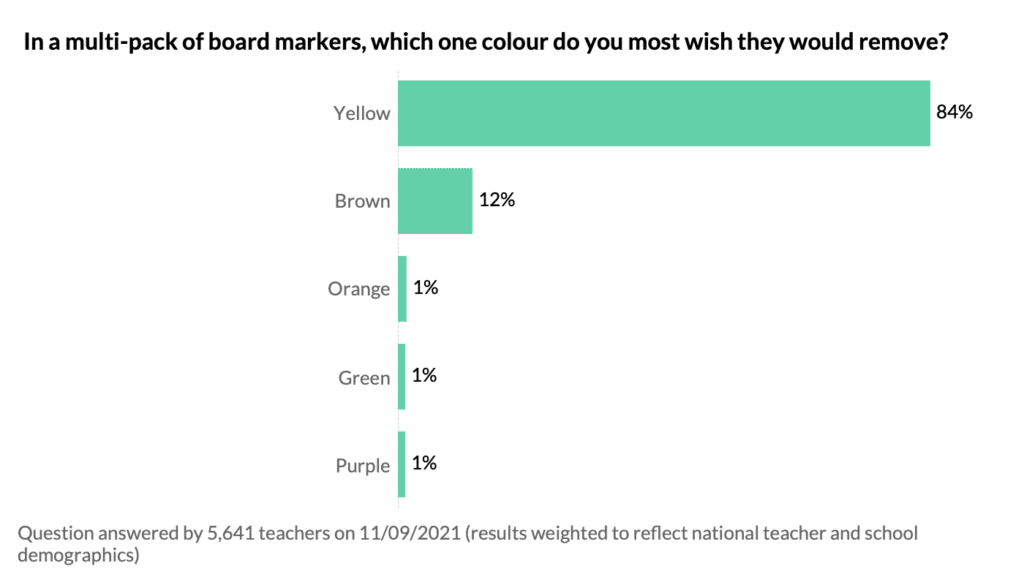
Board markers are a sacred part of most teachers’ stationery set. But they’re not the only thing that matters. If your headteacher forced you to have the cheapest products but you could save one item on quality alone, which would you save?
Among secondary teachers, whiteboard pens came out on top, followed by glue sticks. choose whiteboard pens as their “quality product”.
However, quality glue sticks are the hoy of primary teachers – with 60% of you choosing quality glue sticks. After all, there’s nothing worse than sticking something in, only for it to fall out a day later due to poor glue!
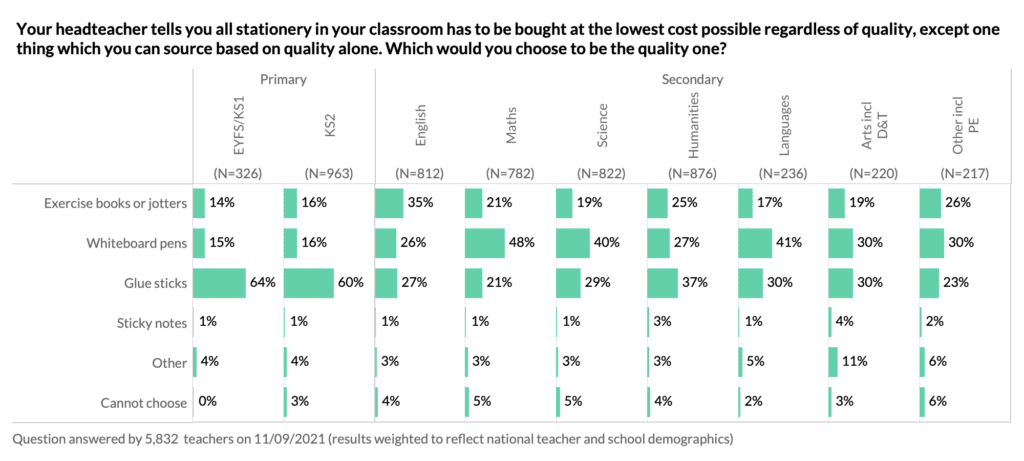
3. More time? Or more help?
Teacher training organisation Teach First recently launched a campaign to pilot more PPA time for teachers in schools in disadvantaged areas. But is more time out of lessons what teachers really want?
Last week we gave you three options: more help (a Teaching Assistant), more money (a pay rise), or more time (extra PPA). Which was most popular?
Looked at in total, almost half of teachers (47%) wanted the pay rise.
However, the phases disagreed on their second place.
Primary teachers wanted more support in their classrooms, with 38% of primary teachers would like to have a full-time teaching assistant in all their classes. Only 5% of secondary teacher share this view, instead opting for extra periods of PPA.
Politically it would be very difficult to pay teachers more to work in the most challenging areas, but it does seem to be an attractive idea!
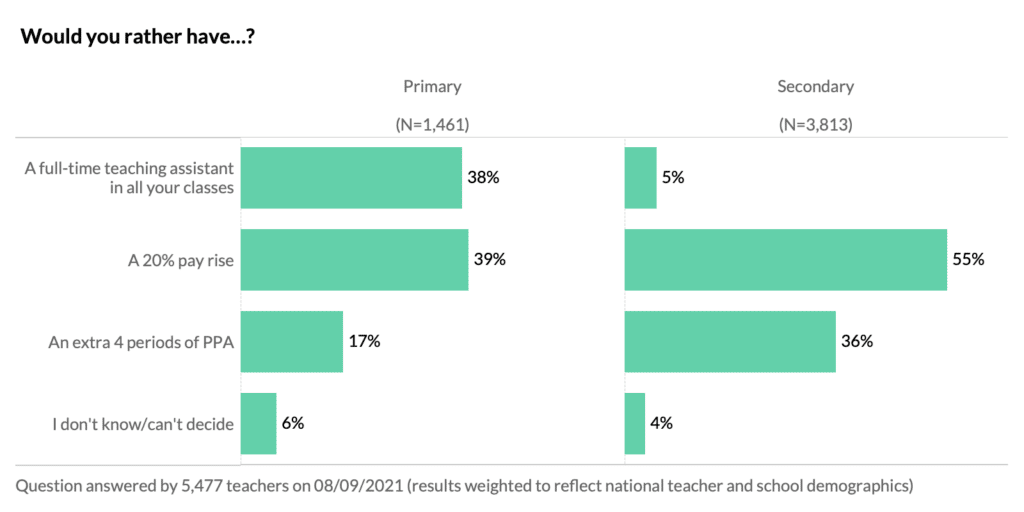
4. Did you get a laptop? 💻💻
Anyone remember when the government gave out laptops as an incentive to becoming a teacher? You may laugh, but those who remember the Fast Track Scheme of the early 2000s will confirm it was real! If you were accepted onto the scheme you got specialist training and, most crucially, a laptop.
Since then you might think things have changed. Surely the pandemic means every teacher now has a laptop from their school? Hmmm.
In 2019, 57% of teachers were given a school-owned laptop. This year that figure is slightly higher (64%) but it’s not exactly the tech revolution people have come to believe given two huge bouts of lockdown learning.

Between the two, primary school teachers are more likely to have a device than secondary teachers. More had laptops, and nearly twice as many had a tablet.
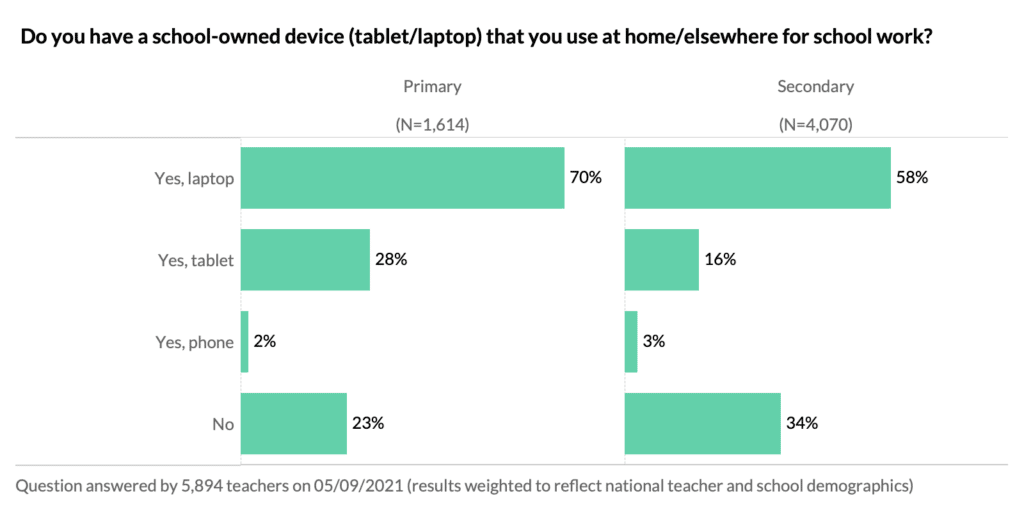
Finally… we know you love the daily read, so here are the ones from last week
The most read tip this week was: How to keep your classroom tidy and keep your sanity
And here are the rest for your reference:





